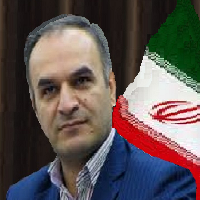دکتر علیرضا مزیدی
-
هدفبهسازی نیروی انسانی فعالیت های سازمان جهت بهبود قابلیت ها و توانمندی های کارکنان از طریق بهینه سازی شرایط، امکانات و فضای کلی محیط کاری آنها است. عملکرد نیروی انسانی سنگ بنای موفقیت هر سازمانی است. ارزیابی عملکرد سازمان باید در جهت بهبود توانمندی نیروی انسانی طراحی و اجرا شود. در این راستا، هدف پژوهش حاضر طراحی مدل بهسازی منابع انسانی مبتنی بر رایانش ابری در بانک تجارت است.روشروش پژوهش حاضر کاربردی بوده که با رویکرد آمیخته اکتشافی (کیفی- کمی) انجام شده است. جامعه آماری در مرحله کیفی 30 نفر از خبرگان بانکی و اساتید دانشگاهی بودند که دارای ویژگی هایی نظیر تجربه، تناسب رشته تحصیلی، مدرک تحصیلی، اشتغال به تدریس در دانشگاه، سابقه پژوهشی و تالیفی در این زمینه بودند و به شیوه غیرتصادفی (هدفمند) و روش گلوله برفی تا حصول به اشباع نظری انتخاب شدند. برای شناسایی مولفه های بهسازی منابع انسانی از روش دلفی در چهار دور و برای طراحی مدل از روش معادلات ساختاری با نرم افزار Smart PLS3 استفاده شده است.یافته هانتایج دلفی نشان داد بهسازی منابع انسانی مبتنی بر رایانش ابری در بانک تجارت، شامل 46 مولفه در قالب 4 بعد (بهسازی آموزشی، بهسازی حرفه ای، بهسازی سازمانی، بهسازی فردی) است. براساس نتایج مدل سازی معادلات ساختاری می توان گفت ابعاد بهسازی آموزشی، بهسازی حرفه ای، بهسازی سازمانی و بهسازی فردی به ترتیب به میزان 864/0، 571/0، 701/0 و 622/0 بر بهسازی منابع انسانی در بانک تجارت تاثیر مثبت و معنی داری دارند.نتیجه گیریپیشنهاد می شود رایانش ابری مورد استفاده در بانک های کشورهای پیشرفته مبنایی برای بهسازی آموزشی نیروهای بانک تجارت کشور قرار گیرد و مهم ترین موانع بهسازی آموزشی و حرفه ای از سوی تیمی متخصص شناسایی و برای از میان برداشتن آن اقدام شود.کلید واژگان: بهسازی منابع انسانی، رایانش ابری، بانک تجارتPurposeThe purpose of improving human resources is to enhance the skills and abilities of employees by optimizing the conditions, facilities, and overall atmosphere of their work environment. The performance of human resources is the cornerstone of any organization's success. Evaluatingan organization's performance should be strategically designed and implemented to enhance the capabilities of its human resources. The purpose of this research is to develop a human resource improvement model based on cloud computing for Tejarat Bank.MethodThe research method employed is of an applied nature, utilizing a mixed exploratory approach that combines both qualitative and quantitative techniques. The statistical population for the qualitative stage consisted of 70 banking and university experts. This was applied in accordance with the research objectives and was descriptive in terms of implementation, utilizing a mixed exploratory approach (qualitative-quantitative). In 2022, the statistical population for the qualitative stage was comprised of 30 banking and university experts, and the sample size was determined to be 360 individuals based on the Krejcie and Morgan table. Simple random sampling was employed for this study. To identify the components of human resource improvement, the Delphi method was employed over four rounds. Additionally, the structural equation modeling technique was utilized to design the model, using Smart PLS3 software.FindingsThe findings from the Delphi study indicated that the enhancement of human resources through cloud computing at Tejarat Bank encompasses 46 components categorized into four dimensions: educational improvement, professional development, organizational enhancement, and individual growth. Based on the results of structural equation modeling, it can be concluded that the dimensions of educational improvement, professional development, organizational enhancement, and individual growth have a positive and significant impact on the advancement of human resources at Tejarat Bank, with coefficients of 0.864, 0.571, 0.701, and 0.622, respectively.ConclusionIt is recommended that cloud computing, as utilized in the banks of advanced countries, be adopted as a foundation for enhancing the training of Bank Tejarat's personnel. Additionally, the primary obstacles to improving training and professionalism should be identified by a team of experts, and proactive measures should be taken to address these challenges.Keywords: Human Resources Improvement, Cloud Computing, Tejarat Bank, Delphi Method, Structural Equation Modeling
-
هدف این پژوهش طراحی مدل رفتاری مدیران در عصردیجیتال با رویکرد نظریه داده بنیاد می باشد. روش پژوهش از حیث هدف از نوع تحقیقات کاربردی و از نظر ماهیت اکتشافی می باشد. جامعه آماری پژوهش مدیران شرکت های پتروشیمی وابسته به شرکت ملی صنایع پتروشیمی ایران می باشند. با روش نمونه گیری هدفمند 8 نفر تیم مشارکت کننده انتخاب شدند. برای گردآوری و تحلیل داده ها از راهبرد پژوهشی نظریه داده بنیاد، استفاده شد. ابزار گردآوری اطلاعات مصاحبه نیمه ساختاریافته می باشد. تجزیه و تحلیل داده ها و طراحی الگو، در سه مرحله کدگذاری باز، محوری و انتخابی انجام گرفت. یافته ها حاکی از آنست که، شرایط علی شامل (عوامل انسانی، عوامل محیطی و عوامل سازمانی)، پدیده اصلی رفتار مدیران شامل (ارتباطات و تعاملات، اعتمادبخشی، تصمیم گیری در عدم قطعیت، ویژگی های شخصیتی و منش دیجیتال), شرایط زمینه ای شامل (شناخت و فهم دیجیتال، آموزش و فرهنگ دیجیتال، مدیریت تجربه و استعداد و مهارت دیجیتال، تفکرآینده نگری و استراتژیک دیجیتال، مدیریت تغییر و قابلیت رهبری دیجیتال), شرایط مداخله گر شامل (ذهنیت و نگرش دیجیتال، هوش مدیر، ارزش های مدیر، و نوآوری و ماهیت کسب و کار و صنعت), راهبردها و مکانیزم ها شامل (راهبرد نوآوری و یادگیری، راهبرد حفظ، ترکیب و تمرکز دیجیتال، راهبرد مشارکت دیجیتال و راهبرد هدایت و حکمرانی دیجیتال) و پیامدها شامل (پیامدهای ابعاد فردی و ابعاد سازمانی) می باشد.
کلید واژگان: الگوی رفتار مدیران، ذهنیت و نگرش دیجیتال، نوآوری و ماهیت کسب و کار، تمرکز دیجیتال، مشارکت دیجیتال، عصردیجیتالThe purpose of this research is to design the behavioral model of managers in the digital era by the approach of data-based theory. The research method is applicable in terms of purpose, and exploratory in terms of nature. The statistical population of the research is the managers of petrochemical companies affiliated to the National Company of Petrochemical Industries of Iran. 8 members of the participating team were selected by the purposeful sampling method. To collect and analyze the data, the foundation's data theory research strategy was used. The data collection tool is a semi-structured interview. Data analysis and model design were done in three stages of open, central and selective coding. The findings indicate that causal conditions include human factors, environmental factors, and organizational factors; the main phenomenon of managers' behavior include communications and interactions, trust, decision-making in uncertainty, personality traits, and digital behavior; background conditions include digital knowledge and understanding, digital education and culture, management of experience and digital talent and skills, future-oriented and digital strategic thinking, change management, and digital leadership ability; intervening conditions include digital mentality and attitude, manager's intelligence, manager's values, and the innovation and nature of business and industry; strategies and mechanisms include innovation and learning strategy, retention strategy, digital combination and focus, digital participation strategy, and digital leadership and governance strategy; and consequences includes consequences of individual dimensions and organizational dimensions.
Keywords: Behavior Pattern Of Managers, Digital Mentality, Attitude, Innovation, The Nature Of Business, Digital Focus, Digital Participation, Digital Era -
نشریه مدیریت سبز، سال سوم شماره 3 (پاییز 1402)، صص 146 -166
این پژوهش با هدف بررسی رابطه بین مدیریت منابع انسانی سبز و رفتار عملکرد زیست محیطی با توجه به نقش آگاهی زیست محیطی و رهبری خدمتگزار در هتل های استان گلستان انجام گرفت. پژوهش از نظر هدف کاربردی و از نظر روش توصیفی- همبستگی مبتنی بر مدل معادلات ساختاری می باشد. جامعه آماری شامل کارکنان هتل های ستاره دار (تک ستاره تا پنج ستاره) استان گلستان به تعداد 462 نفر بود. حجم نمونه با استفاده از جدول کرجسی و مورگان تعداد 210 نفر به روش نمونه گیری تصادفی ساده انتخاب شدند. گردآوری داده ها به وسیله ابزار پرسشنامه انجام گرفت. روایی پرسشنامه به تایید خبرگان و پایایی آن بالای 0.70 از طریق آزمون آلفای کرونباخ مورد تایید قرار گرفت. برای تجزیه و تحلیل داده ها از مدل یابی معادلات ساختاری با استفاده از نرم افزارها Smart-PLS نسخه 3 استفاده شد. نتایج نشان داد بین مدیریت منابع انسانی سبز با عملکرد طرفدار محیط زیست مرتبط با وظیفه، عملکرد فعالانه طرفدار محیط زیست و آگاهی زیست محیطی رابطه معناداری دارد. بین آگاهی زیست محیطی با عملکرد طرفدار محیط زیست مرتبط با وظیفه و عملکرد فعالانه طرفدار محیط زیست رابطه معناداری دارد. همچنین رهبری خدمتگزار بر رابطه بین مدیریت منابع انسانی سبز با عملکرد طرفدار محیط زیست مرتبط با وظیفه، عملکرد فعالانه طرفدار محیط زیست و آگاهی زیست محیطی نقش تعدیلی دارد.
کلید واژگان: مدیریت منابع انسانی سبز، آگاهی زیست محیطی، رهبری خدمتگزار، رفتار عملکرد زیست محیطیThis research was conducted with the aim of investigating the relationship between green human resource management and environmental performance behavior with regard to the role of environmental awareness and servant leadership in hotels in Golestan province in the second half of 2022. The research is applied in terms of purpose and descriptivecorrelation in terms of method based on structural equation model. The statistical population included employees of hotels (one-star to five-star) in Golestan province, numbering 462 people. 210 people were selected by simple random sampling method using Krejcie and Morgan table. Data collection was done by means of a questionnaire. The validity of the questionnaire was confirmed by experts and its reliability (above 0.70) was confirmed through Cronbach's alpha test. For data analysis, structural equation modeling was employed using Smart-PLS version 3 software. The results showed that there is a significant relationship between green human resource management and task-related pro-environmental performance, proactive pro-environmental performance and environmental awareness. There is a significant relationship between environmental awareness and task-related pro-environmental performance and proactive pro-environmental performance. Also, servant leadership has a moderating role on the relationship between green human resource management and task-related pro-environmental performance, proactive pro-environmental performance and environmental awareness.
Keywords: green human resource management, environmental awareness, servant leadership, environmentalperformance behavior -
Today, improving human resources is one of the most used areas of cloud computing in organizations. Because on the one hand, it has implementation complexities and diverse systems, and its implementation requires the use of numerous software, and on the other hand, it is possible to use the human resources services of organizations. The aim of the current research was to design a human resource improvement model based on cloud computing in Tejarat Bank. The research method is applied and descriptive, which was done with a mixed exploratory approach (qualitative-quantitative). The statistical population in the qualitative stage was 30 people from banking and university experts who were selected by a purposeful judgment method, and in the quantitative stage, all the experts of Tejarat Bank were 5998 people. To identify the components of human resource improvement, the Delphi method was used in four rounds, and to design the model, the structural equation method with Smart PLS3 software was used. Delphi results showed that human resources improvement based on cloud computing in Tejarat Bank includes 46 components in the form of 4 dimensions (educational improvement, professional improvement, organizational improvement, and individual improvement). Also, based on the results of structural equation modeling, it can be said: the dimensions of educational improvement, professional improvement, organizational improvement, and individual improvement have a positive effect on the improvement of human resources in Bank Tejarat at the rate of 0.864, 0.571, 0.701, and 0.622, respectively.
Keywords: Human resources improvement, Cloud Computing, Tejarat Bank, Delphi, Structural Equations -
در هزاره سوم مولفه ، امنیت دستخوش تغییرات مهمی شده است. انسان به عنوان رکن اصلی در سازمان ها فعال بوده و در جامعه نقش محوری را ایفا می کند. در هزاره سوم یکی از مسایل مهم چالش زیست محیطی می باشد. در این پژوهش با موضوع، انسان، سازمان و اجتماع به آن پرداخته شده است. همچنین چگونگی رابطه ی امنیت با مسیله زیست محیطی بررسی و تبیین گردید. پژوهش حاضر از نظر نوع توصیفی و تحلیلی و از نظر هدف بنیادی می باشد. شیوه جمع آوری اطلاعات هم به روش اسنادی و بااستفاده از روش تحلیل محتوا انجام گرفته است .
کلید واژگان: امنیت، امنیت زیست محیطی، انسان و محیط زیست، سازمان و محیط زیست، اجتماع و محیط زیستIn the third millennium, security has undergone important changes. human is active as the main pillar in organizations and plays a central role in society. In the third millennium, one of the important issues is the environmental challenge. In this research, it has been discussed with the subject of human, organization and society. Also, the relationship between security and environmental issues was investigated and explained. The current research is descriptive and analytical in terms of its fundamental purpose. The method of collecting information is done using the documentary method and using the content analysis method.
Keywords: Security, environmental security, human, environment, Organization, Communityand environment -
در دوران همه گیری کووید 19 سطح انگیزش شغلی و سلامت روانی تحت تاثیر منفی قرار گرفت از طرفی در این دوران آموزش الکترونیکی توسعه یافت لذا هدف این مطالعه ارایه الگوی ارتباطی بین آموزش الکترونیکی، سلامت روان و انگیزش شغلی در دوران همه گیری کووید 19 در کارکنان دان انجام شد. تحقیق حاضر از نوع تحقیقات توصیفی، کاربردی و پیمایشی است که به صورت میدانی انجام شد. برای انجام این تحقیق از بین کارکنان ستاد دانشگاه علوم پزشکی و خدمات بهداشتی درمانی مازندران و دانشکده های زیرمجموعه، به تعداد 2016 نفر به صورت تصادفی طبقه ای و بر اساس جدول مورگان 322 نفر به عنوان نمونه انتخاب شدند. در ادامه و پس از کسب مجوزهای لازم پرسشنامه های محقق ساخته انگیزش شغلی و آموزش الکترونیکی و پرسشنامه سلامت روان گلدبرگ (1972) بین افراد نمونه توزیع شد و جمع آوری شد. در نهایت از روش معادلات ساختاری با استفاده از نرم افزارهای SPSS و PLs جهت تجزیه و تحلیل داده ها استفاده شد. نتایج نشان داد، آموزش الکترونیکی بر سلامت روان و انگیزش شغلی تاثیر معناداری دارد. نتایح تایید کننده تاثیر آموزش الکترونیکی بر سلامت روان و انگیزش شغلی کارکنان می باشد بنابراین پیشنهاد می شود مسولین جهت بهبود عملکرد و سرزندگی کارکنان به آموزش الکترونیکی توجه داشته و راهکارهایی جهت بالا بردن سطح سلامت روان و انگیزش شغلی بین کارکنان بیاندیشند.
کلید واژگان: آموزش الکترونیکی، سلامت روان، انگیزش شغلیduring the Covid 19 epidemic, the level of job motivation and mental health was negatively affected, on the other hand, e-learning was developed during this period, so the purpose of this study is to present a relationship model between e-learning, mental health, and job motivation during the Covid 19 epidemic. It was done by Don's staff. The current research is a descriptive, applied, and survey research that was conducted in the field. To conduct this research, 2016 people were randomly selected from among the staff of Mazandaran University of Medical Sciences and Health Services and its affiliated faculties, and 322 people were selected as a sample based on Morgan's table. After obtaining the necessary permits, researcher-made questionnaires on career motivation and electronic education and Goldberg's mental health questionnaire (1972) were distributed among the sample and collected. Finally, the structural equation method using SPSS and PLs software was used to analyze the data. The results showed that e-learning has a significant effect on mental health and job motivation. The results confirm the effect of e-learning on the mental health and job motivation of employees, so it is suggested that managers pay attention to e-learning to improve the performance and vitality of employees and find ways to increase the level of mental health and job motivation among employees.
Keywords: E-learning, mental health, Career Motivation -
یکی از بزرگ ترین موانع برای استفاده کارآمد از منابع در سازمان های دولتی این است که سطح کسری بودجه به طور قابل توجهی زیاد است؛ بنابراین، تمام جوانب کسری بودجه و عوامل موثر بر تمایل برای ایجاد کسری بودجه در سازمان های دولتی باید بررسی شود. پژوهش حاضر با بررسی کنترل بودجه و جو کاری اخلاقی بر تمایل به کسری بودجه با تاکید بر نقش عدالت رویه ای ادراک شده در ادارات دولتی استان گلستان انجام شده است. این پژوهش از بعد هدف، کاربردی و از نظر روش توصیفی -پیمایشی است. به منظور جمع آوری اطلاعات آمیزه ای از روش های پژوهش کتابخانه ای و میدانی استفاده شده است. با توجه به جدول کرجسی -مورگان حداقل حجم نمونه برابر 136 است. به دلیل احتمال عدم برگشت پذیری برخی از پرسشنامه ها 150 پرسشنامه بین گروه هدف توزیع شده است. روش نمونه گیری در این تحقیق از نوع تصادفی طبقه ای بوده است. داده ها توسط معادلات ساختاری و به کمک نرم افزار اسمارت پی.ال.اس. تحلیل شده است. نتایج پژوهش نشان داد که در این پژوهش بین کنترل بودجه و جو کاری اخلاقی با تمایل به کسری بودجه با تاکید بر نقش عدالت رویه ای ادراک شده در ادارات کل دولتی استان گلستان رابطه ی معناداری وجود دارد.کلید واژگان: کنترل بودجه، جو کاری اخلاقی، تمایل به کسری بودجه، عدالت رویه ای ادراک شدهOne of the biggest obstacles to the efficient use of resources in government agencies is that the level of the budget deficit is significantly high. Therefore, all aspects of the budget deficit must be considered and the effective factors of the tendency to create a deficit in government organizations should also be considered. The present study was conducted by examining budget control and ethical manipulation on the tendency to budget deficit with emphasis on the role of perceived procedural justice in government departments of Golestan province. The present research is applied in terms of purpose and descriptive-survey method. In order to collect information, a combination of library and field methods has been used. According to the Krejcie-Morgan table, the minimum sample size is 136. Due to the possibility of non-reversibility, some 150 questionnaires were distributed among the target group. The method in this study is stratified random. The data were analyzed by structural equations and by using Smart PLS software. The results show that in this study there is a significant relationship between budget control and ethical greed with the tendency to budget deficit with emphasis on the role of perceived procedural justice in government departments of Golestan province.Keywords: Budget control:Ethical manipulation:Tendency to budget deficit, Perceived procedural justice
-
هدف تحقیق حاضر، بررسی رابطه بین معنویت در محیط کار با تعهد کارکنان با توجه به نقش میانجی رفتار شهروندی سازمانی و نقش تعدیلی هوش هیجانی در صدا و سیمای مرکز گلستان بوده است. تحقیق حاضر با استفاده از روش توصیفی/ پیمایشی و همبستگی انجام شد. جامعه آماری آن کلیه کارکنان سازمان صدا و سیمای مرکز گلستان بودند که تعداد آنها 400 نفر بود و با بهره گیری از جدول کرجسی و مورگان، 196 نفر به عنوان حجم نمونه تعیین گردید و روش نمونه گیری در این پژوهش، تصادفی ساده بوده است. داده های تحقیق با روش کتابخانه ای و میدانی گردآوری شده و ابزار مورد استفاده پرسشنامه استاندارد معنویت در محیط کار «میلیمان و همکاران»، پرسشنامه استاندارد تعهد کارکنان «می یر و آلن»، پرسشنامه استاندارد رفتار شهروندی سازمانی «پادساکف»، و پرسشنامه استاندارد هوش هیجانی «برادبری و گریوز» بوده است. پایایی پرسشنامه ها با استفاده از روش آلفای کرونباخ برای پرسشنامه معنویت در محیط کار 0.835، پرسشنامه تعهد کارکنان 0.864، پرسشنامه رفتار شهروندی سازمانی 0.823، و پرسشنامه هوش هیجانی 0.856 محاسبه شد و روایی ابزار با روش روایی همگرا مورد تایید قرار گرفته اند. همچنین، تجزیه و تحلیل داده ها با استفاده از روش مدل یابی معادلات ساختاری و به کمک نرم افزار Smart-PLS انجام پذیرفت که نتایج تحقیق معنادار بودن تمامی فرضیه ها را نشان می دهد و به طور کلی فرضیه های تحقیق مورد تایید قرار گرفته اند.
کلید واژگان: معنویت در محیط کار، تعهد کارکنان، رفتار شهروندی سازمانی، هوش هیجانیThe purpose of this study was to investigate the relationship between spirituality in the workplace and employee commitment with respect to the mediating role of organizational citizenship behavior and the moderating role of emotional intelligence in Golestan Central Broadcasting. The present study was conducted using descriptive / survey and correlation methods. The statistical population was all employees of Golestan Broadcasting Center, which numbered 400 people. Using Krejcie and Morgan's table, 196 people were determined as the sample size and the sampling method was simple random. The research data were collected by the library and field methods and the tools used were the standard questionnaires of spirituality in the workplace "Milliman et al", the standard questionnaire of employee commitment "Meyer and Allen", the standard questionnaire of organizational citizenship behavior "Podsakoff", and the standard questionnaire of emotional intelligence. "Bradbury and Graves." The reliability of the questionnaires was calculated using Cronbach's alpha method for workplace spirituality questionnaire 0.835, employee commitment questionnaire 0.864, organizational citizenship behavior questionnaire 0.823, and emotional intelligence questionnaire 0.856, and the validity of the instrument was confirmed by the convergent validity method. Also, data analysis was performed using the structural equation modeling method and Smart-PLS software, which shows the significance of all hypotheses, and in general, the research hypotheses have been confirmed.
Keywords: workplace spirituality, Employee Commitment, Organizational Citizenship Behavior, emotional intelligence -
زمینه و هدف
از مهم ترین خط مشی های کیفیت سازمان در دانشگاه ها از قبیل دانشگاه آزاد اسلامی جمهوری اسلامی ایران، توسعه کیفی منابع انسانی و جذب سرمایه های انسانی متمایز است. البته برای تحقق این امر به برندسازی سازمانی نیاز است و از آنجا که برندسازی سازمان، مجموعه عواملی است که باعث می شود سازمان مکانی خوب برای کارکردن نشان داده شود، بنابراین بایستی آن عوامل شناسایی و تقویت شوند. لذا، هدف تحقیق تعیین عوامل موثر بر برند سازمانی دانشگاه آزاد اسلامی (مطالعه موردی: عوامل روانشناختی و سلامتی روانی، عوامل فرهنگی- اجتماعی) بود.
روش کارروش پژوهش از نوع آمیخته و مبتنی بر مدل معادلات ساختاری بود. جامعه آماری پژوهش را کلیه روسا و معاونین دانشگاه آزاد اسلامی کشور در سال 1398 تشکیل داد. با توجه به حجم بالای جامعه آماری، ابتدا بعد از طراحی پرسش نامه محقق ساخته، در مجموع 300 پرسش نامه در بین جامعه آماری، توزیع شد که با توجه به تعداد پرسش نامه های تکمیل شده، تعداد نمونه آماری تحقیق در پژوهش حاضر به 254 نفر رسید. تجزیه وتحلیل داده ها به کمک نرم افزار Smart Pls3 و SPSS 20 انجام گردید.
یافته هانتایج نشان داد، عوامل عوامل روانشناختی و سلامتی روانی (عوامل روحی، سلامت روانی، تصویر مثبت ذهنی، نگرش) و عوامل فرهنگی- اجتماعی (شرایط فیزیکی، جو جامعه، محیط اجتماعی، محیط فرهنگی، درگیر شدن، ارزش جذابیت، ارزش جهان شمولی) بر پدیده برند سازمانی دانشگاه آزاد اسلامی تاثیر دارند و نیز مدل تحقیق از برازش مطلوب برخوردار است.
نتیجه گیریبه نظر می رسد مقوله استفاده از مدل برند سازمانی در دانشگاه آزاد اسلامی بتواند جایگاه مناسب و کاربردی در بین مدیران این سازمان داشته باشد؛ بنابراین می توان برنامه ریزی و استراتژی صحیح و علمی برای توسعه ی مدل برند سازمانی در دانشگاه ها را به عنوان بالاترین نقطه قوت مدیران آموزش عالی در این حوزه معرفی نمود.
کلید واژگان: برند سازمانی، مدل، رقابت بازار، عوامل روانشناختی، عوامل فرهنگی- اجتماعیBackground & AimsIn todaychr('39')s world, one of the salient features of human societies that are affected by rapid progress and development is the complexity of cultural, social, and economic problems of societies. The stability, preservation, and survival, progress, and development of these communities are possible only by solving problems in the best possible way. Universities, as a small but important part of human society, are no exception to this rule. Therefore, to survive, to overtake competitors in the market of competition and development and progress, they must identify problems and eliminate them in the shortest possible time. Therefore, in the current competitive and complex era, which has led to the rapid growth of higher education institutions and the blurring of global boundaries, introducing the brand of a university to its stakeholders is of particular importance. One of these new forms of branding is the "organizational brand". A phenomenon that has emerged rapidly from several years ago and has attracted special attention. The term organizational brand represents something that connects people to the organization. Leads to a positive attitude towards the brand. This type of attitude is a psychological contract between the organization and employees. Accordingly, Wilden 2010 mentions the organizational brand as a tool to ensure the achievement of a skilled and competent workforce, as well as increasing the commitment and loyalty of the current employees of the organization. Therefore, all organizations are involved in the competition and attracting academic elites, and this branding is a concern for all institutions, and higher education can also help to attract better and elite students. Thus, universities have realized the importance of attracting students and having distinctive mental images in a competitive market, so that increasing competition between universities for student enrollment has forced them to create a set of desirable characteristics. And create a unique brand to attract potential students. Therefore, they can create the most valuable mental image among competitors by branding the potential capacities of higher education. Therefore, paying attention to the issue of branding in the field of universities is necessary to achieve a competitive advantage. Therefore, identifying the factors affecting the behavior of customers and organizational brand is important that in this study, psychological factors and mental, cultural, and social health were mentioned. One of the most important quality policies of the organization in universities such as the Islamic Azad University of the Islamic Republic of Iran is the qualitative development of human resources and the attraction of human capital. Of course, to achieve this, organizational branding is needed, and since organizational branding is a set of factors that make the organization a good place to work, so those factors must be identified and strengthened. Given the challenges that the present and future environment of Iranian organizations such as the Islamic Azad University will involve, so the researcher to identify and research variables, namely psychological and mental health factors, socio-cultural factors in brand development. A paid organization that other researchers in the field of brand management have paid less attention to. Therefore, the present study seeks to answer the question: Do psychological and mental health factors, socio-cultural factors affect the organizational brand of Islamic Azad University?
MethodsThe research method is descriptive and of correlation schemes and structural equation modeling methods. The statistical population in this study included all the presidents and deputies of the Islamic Azad University in 1398. To select the sample, the available purposive sampling method was used, in such a way that among the presidents and deputies of the Islamic Azad University based on the criteria for entry and exit of the research (criteria for entry of subjects in the research, brand awareness and having Work experience was in the units of Islamic Azad University and the exclusion criteria were unwillingness to answer questions honestly and dissatisfaction to participate in the study) and was selected as a sample group. In this study, a total of 300 questionnaires were distributed in person among the presidents and deputies of the Islamic Azad University who were available. Of these, 245 were answered correctly and 55 were unanswered. The number of research samples in the present study reached 245 people who were experts who participated in filling out the questionnaire. In order to collect data and information, a researcher-made questionnaire was used for analysis, which includes two parts: general and specialized questions. In 3 general questions (including age, gender, and work experience) we tried to collect general and demographic information about the respondents, also with 45 specialized questions in the field of the organizational brand to try to measure the dimensions of psychological and mental health factors, socio-cultural factors The effect on the organizational brand in Islamic Azad University was measured. Specialized questions in the form of 2 categories of psychological and mental health (including components of mental factors, mental health, positive mental image, attitude) and categories of socio-cultural factors (including components of physical condition, community atmosphere, social environment, cultural environment, Engagement, Attraction Value, Universal Value) with 45 items identified by the Likert process from "too little to too much". Statistical analysis in this study was performed using smart pls and spss 20 software. Structural equation modeling with the help of smart pls software version 3 was used to examine the relationships between research variables.
ResultsThe results showed that psychological factors and mental health factors (mental factors, mental health, positive mental image, attitude), socio-cultural factors (physical conditions, community atmosphere, social environment, cultural environment, involvement, value, attractiveness, value Universality) have an effect on the organizational brand phenomenon of Islamic Azad University and also the research model has a favorable fit.
ConclusionIt seems that the use of the organizational brand model in Islamic Azad University can have a suitable and practical position among the managers of this organization; Therefore, correct and scientific planning and strategy for the development of the organizational brand model in universities can be introduced as the highest strength of higher education managers in this field.
Keywords: Organizational Brand, Model, Market Competition, Psychological Factors, Socio-Cultural Factors
- این فهرست شامل مطالبی از ایشان است که در سایت مگیران نمایه شده و توسط نویسنده تایید شدهاست.
- مگیران تنها مقالات مجلات ایرانی عضو خود را نمایه میکند. بدیهی است مقالات منتشر شده نگارنده/پژوهشگر در مجلات خارجی، همایشها و مجلاتی که با مگیران همکاری ندارند در این فهرست نیامدهاست.
- اسامی نویسندگان همکار در صورت عضویت در مگیران و تایید مقالات نمایش داده می شود.








